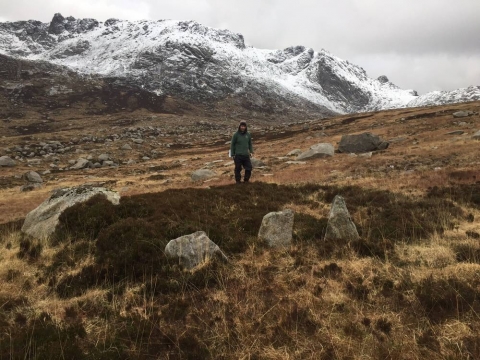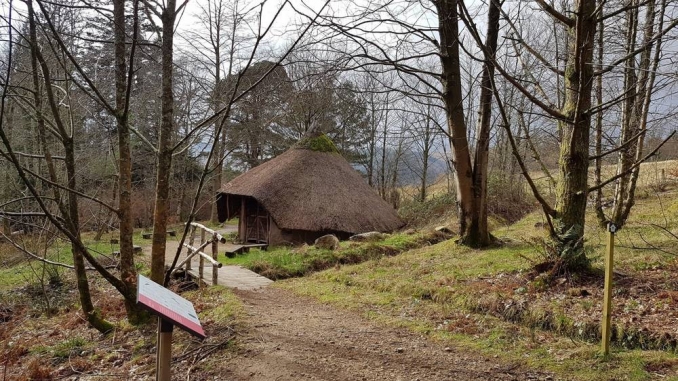Bronze Age round house high in Scottish Isle of Arran starts to reveal its secrets

Coire a'Bhradain is above Glen Rosa (Scottish Gaelic: Gleann Ruasaidh) on the Island of Arran (Eilean Arainn). As reported by the National Trust for Scotland (Scottish Gaelic: Urras Nàiseanta na h-Alba) archaeologists have been investigating the remains of a small roundhouse located high up on Coire a’ Bhradain. First discovered in 2001 by Arran Mountain Rescue Team members Ali Hume and Henry Murdo, it is Arran’s highest round house at about 1270 feet (390 metres) above sea level.
It was during an excavation in 2017 by National Trust for Scotland’s Thistle Camp participants who were joined by the charity’s head of archaeological services, Derek Alexander, that the roundhouse started to reveal its secrets. The dig uncovered a central hearth area of stone and clay with remnants of hazel charcoal. The charcoal was submitted to the Scottish University Environmental Research Centre (SUERC) for a radiocarbon date. This points to the round house being occupied around 1400-1300 BC.
It is thought that the Coire a’ Bhradain site was used as temporary shelter during hunting trips. Alternatively, it could have been used like a seasonal shieling site to keep grazing animals out on the summer hill pastures. The Trust point out that: "the date of the site indicates that it’s of a similar date to some of the larger roundhouses excavated at Tormore on the western side of Arran. The results from these sites, and from two roundhouses on Trust land in Glen Rosa, were used by the Brodick Country Park team to build a replica roundhouse in the woods just to the north-west of the castle in 2012–13. This work was co-ordinated by Corinna Goeckeritz, one of the Trust rangers at Brodick. The completed structure is now used as an educational element both for school groups and for wider events".
Image above: Roundhouse site in 2007 courtesy of National Trust for Scotland.
Image below: Replica Bronze Age roundhouse in Brodick Castle Country Park courtesy of National Trust for Scotland.






